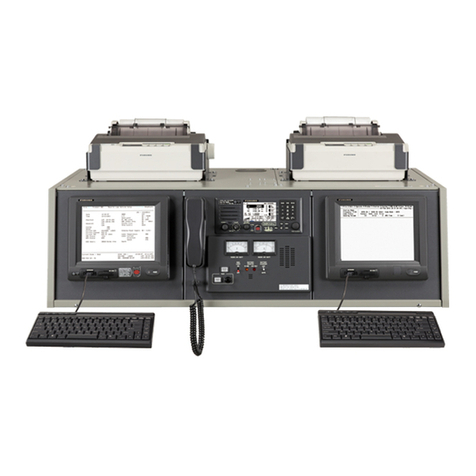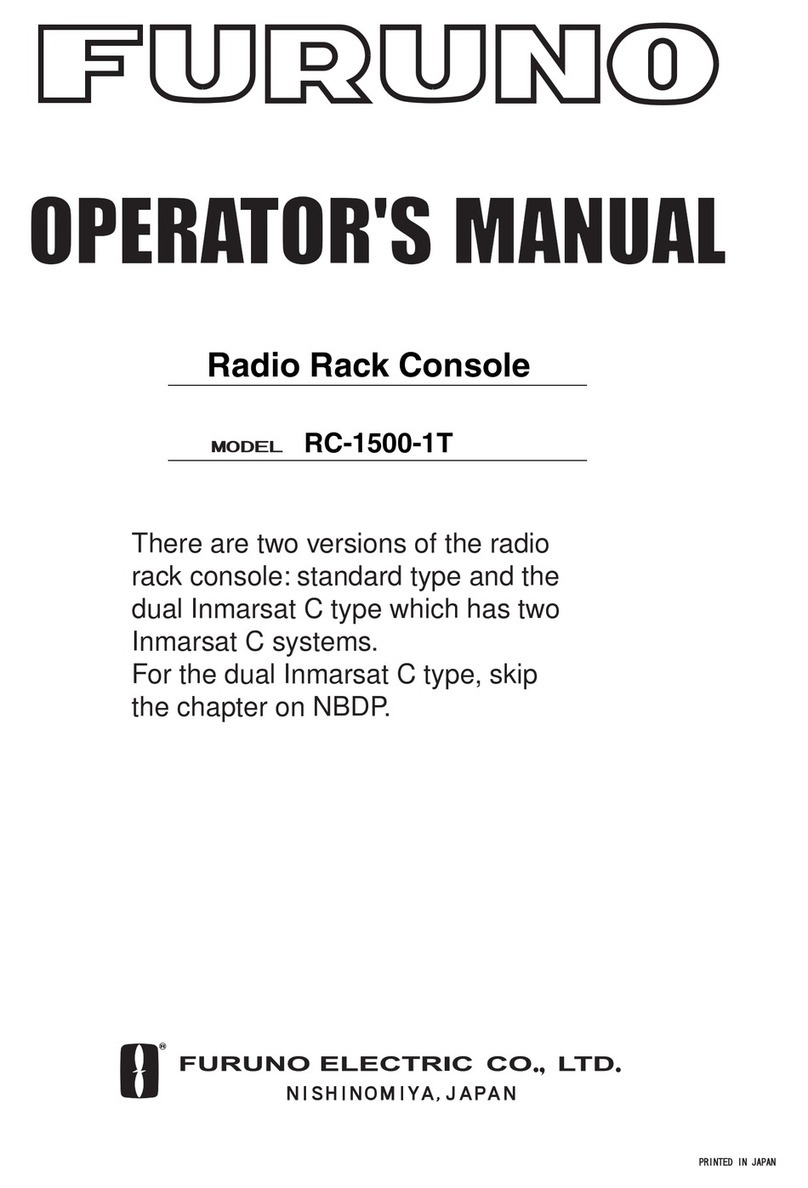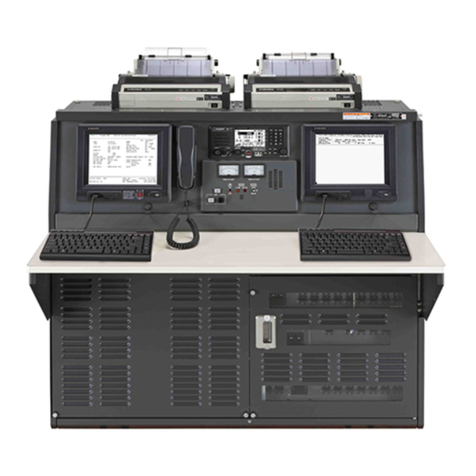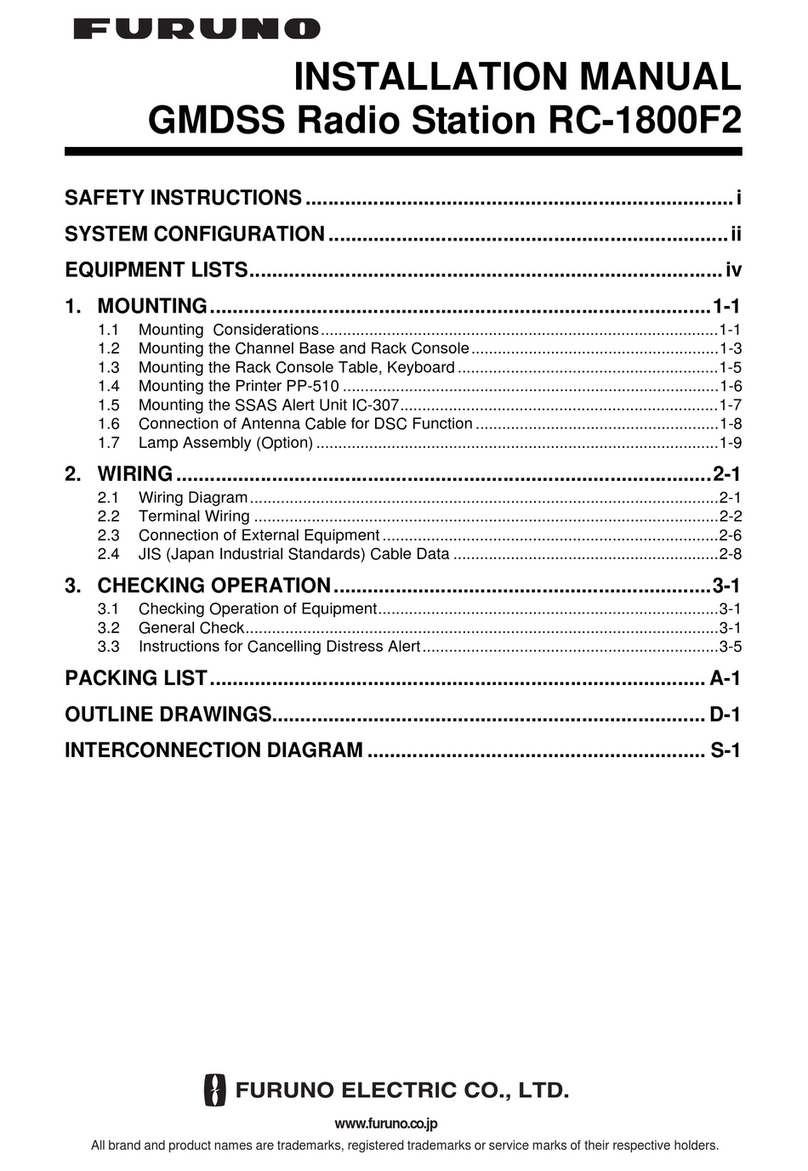iiiiiiiiiiiii i
SAFETY INSTRUCTIONS
Do not open the equipment.
This equipment uses high
voltage electricity which can
shock, burn or cause serious
injury. Only qualified person-
nel should work inside the
equipment.
WARNING
Do not disassemble or modify the
equipment.
Fire, electrical shock or serious injury
can result.
Turn off the power immediately if
water leaks into the equipment or
the equipment is emitting smoke or
fire.
Continued use of the equipment can
cause fire or electrical shock.
Keep sparks and lit smoking materials
away from the lead-acid battery. Make sure
the battery room is well ventilated.
The battery emits hydrogen gas which can
cause explosion.
The electrolyte in the lead-acid battery
contains sulfuric acid which can be harm-
ful, particularly to the eyes.
If sulfuric acid contacts eyes, skin or clothing,
flush directly with water. For eyes, contact a
physician. Loss of eyesight can result.
The temperature of the electrolyte in the
lead-acid battery should not exceed 45°C.
The electrolyte can cause explosion if it
becomes too hot.
DANGER
Never touch the SSB antenna, antenna
coupler or lead-in insulator when the
SSB radiotelephone is transmitting.
High voltage which can cause death is
present at the above-mentioned locations
when the SSB radiotelephone is trans-
mitting.
Turn off the power before performing
maintenance on the SSB antenna.
Antenna
Coupler
Antenna Wire
(High Voltage)
Indoor
Antenna
Wire
Lead-in
Insulator
WARNING
To avoid electrical shock,
do not remove cover,
No user-serviceable parts
inside.
Name : WARNING LABEL(2)
Type : 03-129-1001
CodeNo. : 100-236-740






































